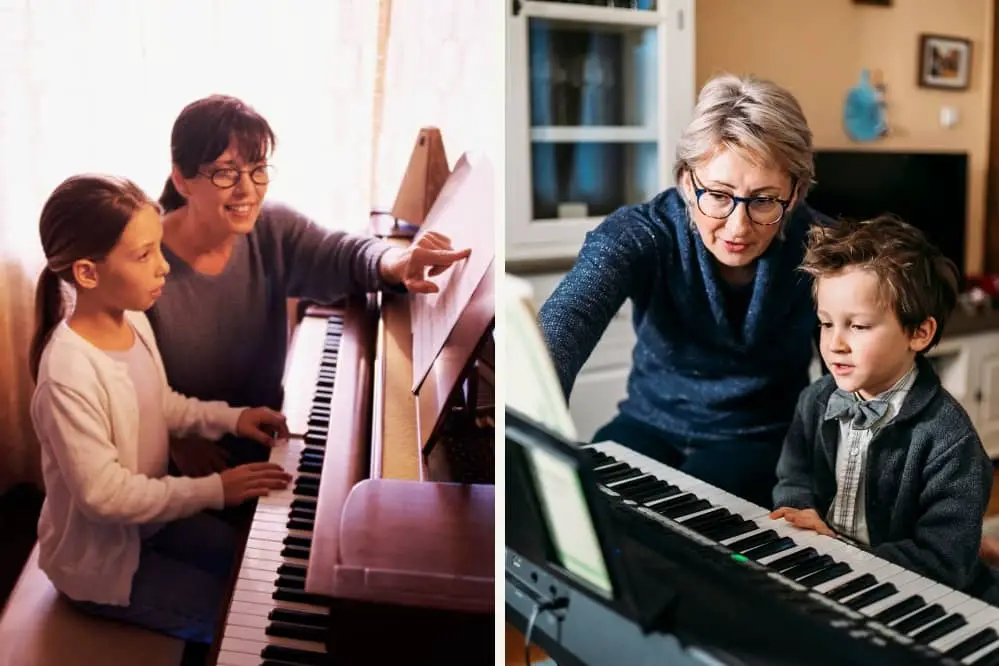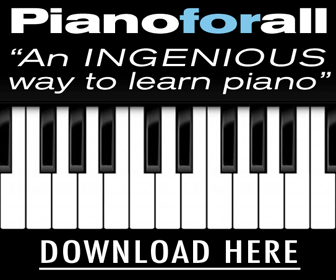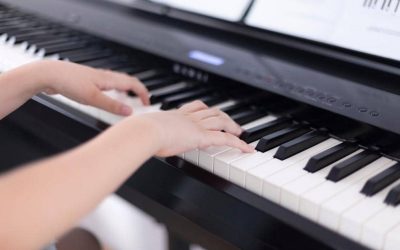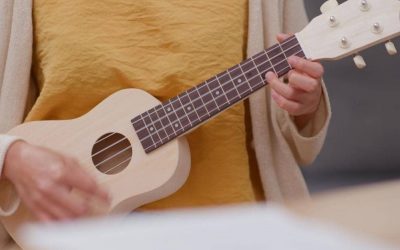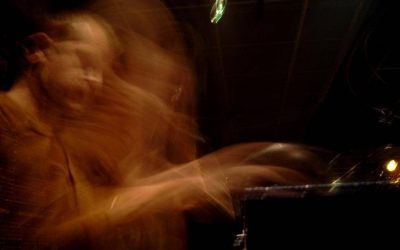Technically speaking, the keyboard and the piano are two different instruments, but of course, they are very closely related. In theory, both of these instruments are designed to do the same thing, but they do function differently.
Seeing as there are some major differences between pianos and keyboards, does this mean that learning to play these instruments is also different? Are piano and keyboard lessons the same?
Well, they can be the same thing in theory, but they usually differ on some important fronts. Let’s take a closer look at the differences between pianos and keyboards, as well as the differences between piano and keyboard lessons.
Keyboard vs. Piano
Before we get into talking about the differences between piano and keyboard lessons, it would probably be helpful to know what the differences between these two instruments are.
The piano is an acoustic stringed instrument played through means of percussion. The keys are connected to a hammer, and when a key is pressed, that hammer hits a string, which then makes the sound. With an electronic keyboard, there are no strings and hammers, just notes programmed to match specific keys.
Pianos only have the keys, but no electronic or training functions, whereas electric keyboards usually come with a myriad of buttons and functions, such as to change tone, pitch, and to even change the “instrument” being played with the keys.
With pianos, the volume of the music being played is decided by how hard the player hits the keys. The harder the keys are hit, the louder the sound. This allows for great dynamic range and fantastic volume control for each and every single note. However, this is not the same on the keyboard, where the volume is decided by the volume control knob.
Also, a real acoustic piano is going to be much larger and heavier, plus more expensive, than an electronic keyboard.
Keyboard Lessons vs. Piano Lessons
Now that we know what the main differences between the piano and the keyboard are, it’s time to learn what the differences between piano and keyboard lessons are.
The Repertoire
One of the biggest differences between these two types of lessons has to do with the repertoire, or in other words, the type of music that is learned on each instrument.
With a classic acoustic piano, generally speaking, you will learn traditional western classical music, such as pieces from famed composers such as Mozart, Bach, Beethoven, and so on and so forth.
On the other hand, keyboard lessons usually focus more on popular music of the day, such as songs sung by pop artists or performed on the radio.
One-Handed Notes vs. Two-Handed
Another big difference between piano lessons and keyboard lessons has to do with the way which students learn to play. With keyboard lessons, a student will usually be taught how to read right hand melody notes while the left hand plays simple block chords or 1 finger cords.
On the other hand, with piano lessons, students are taught the notes in a much more comprehensive manner, and it can be a little more difficult. With piano lessons, a student will usually be taught how to play the notes properly with both hands, not just the right hand.
As you can see, in this sense, traditional piano lessons are much more comprehensive and useful than keyboard lessons, especially when it comes to being able to play notes with both hands, as well as being able to use both hands in unison.
Learning Notes vs. Modern Learning
The other main difference between piano lessons and keyboard lessons has to do with the fundamental training routine. With traditional piano lessons, a student’s sole focus is learning the notes, the octaves, timing, reading sheet music, and then playing that sheet music on the piano. It’s all quite straightforward and focuses on the fundamentals of music.
On the other hand, because keyboards are so much more technologically advanced, keyboard lessons will often focus on things other than learning sheet music and playing that sheet music.
Keyboard lessons should still teach you about notes and sheet music, but due to the nature of the instrument, a student taking keyboard lessons will also learn to understand what all of the electronic buttons on the keyboard do, how to identify and read simple chords, and even how to play by ear.
Final Thoughts
Although piano and keyboard lessons differ quite a bit in terms of methodology and focus, they both work towards the same end goal, which is musical literacy.
They may have different ways of going about it, and the skills learned in each type of lessons are different, but both are designed to allow students to play their favorite songs.
It is encouraged that keyboard students take piano lessons and vice versa, as this will provide dedicated players with a wide variety of skills and knowledge.

